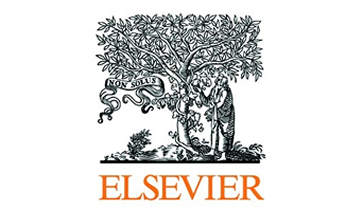 Predator threat stress promotes long lasting anxiety-like behaviors and modulates synaptophysin and CB1 receptors expression in brain areas associated with PTSD symptoms
Predator threat stress promotes long lasting anxiety-like behaviors and modulates synaptophysin and CB1 receptors expression in brain areas associated with PTSD symptoms
- Alline Cristina Camposa,
 ,
,  ,
, - Frederico Rogério Ferreiraa, b,
- Wilson Araujo da Silva Jr.c, d, e,
- Francisco Silveira Guimarãesa, b
- a Department of Pharmacology, School of Medicine of Ribeirão Preto, University of São Paulo, 3900 Av. Bandeirantes, Monte Alegre, Ribeirão Preto, São Paulo, Brazil
- b Center for Interdisciplinary Research on Applied Neurosciences (NAPNA), University of São Paulo, Brazil
- c Department of Genetics, School of Medicine of Ribeirão Preto, University of Sao Paulo, 3900 Av. Bandeirantes, Monte Alegre, Ribeirão Preto, São Paulo, Brazil
- d National Institute of Science and Technology in Stem Cell and Cell Therapy, Brazil
- e Center for Cell Therapy and Regional Blood Center, Ribeirão Preto, SP, Brazil
Abstract
Several studies have suggested that changes in hippocampal, prefrontal cortex and amygdaloid complex function are associated with the main symptoms of Posttraumatic Stress Disorder (PTSD). Predator exposure can mimic some aspects of PSTD such as hyperarousal and chronic anxiety. However, little is known about the neural substrate involved in this model. Synaptophysin (SYP) expression has been used to evaluate synaptic plastic changes while cannabinoids have emerged as a therapeutic target for the treatment of stress- and anxiety-related disorders. The present work evaluated whether the long lasting behavioral effects evoked by predator exposure are associated to long-term changes in the expression of the Cannabinoid receptor 1 (CB1) and the synaptic protein SYP in brain areas related to the genesis of PTSD symptoms (frontal cortex, hippocampus and amygdaloid complex). Male Wistar rats were exposed to a live or a dummy cat and seven days later submitted to the elevated plus maze test. To explore possible neurobiological mechanisms involved in these effects, CB1 receptor and SYP mRNA expression were measured in the hippocampus, frontal cortex and amygdaloid complex. Single predator exposure promoted long-lasting anxiogenic effects. Seven days after predator threat CB1 mRNA expression was down regulated in the frontal cortex and amygdaloid complex while SYP gene was up regulated in the amygdaloid complex. Our results suggested that predator exposure causes long-lasting anxiogenic effects associated with hyperactivation of amygdaloid complex and modulation of CB1 receptor in brain areas related to PTSD symptoms.
Highlights
Keywords
- Posttraumatic stress;
- Predator threat;
- Animal model;
- CB1 receptor;
- Synaptophysin
Figures and tables from this article:
- Fig. 1. (A) Percentage of freezing response of rats exposed to a live or a dummy cat. Columns represent mean ± SEM. * indicates a significant difference between groups (Student’s t-test, p < 0.001; n = 9 animals/group respectively). (B) Predator exposure induces long-term anxiogenic effects in rats. Animals were submitted to the EPM seven days after a 10 min predator exposure session. Columns represent means ± SEM. In the upper panel the open columns represent the number of enclosed arm entries. In the lower panel open columns represent the percentage of entries onto the open arms while the hatched columns represent the percentage of the time spent in the open arms. * indicates a significant difference from vehicle-live cat exposed rats (Student’s t-test; n = 9 animals/group, respectively).
- Fig. 2. The long-lasting behavioral effects of predator exposure were associated with changes in Synaptophysin (SYP) mRNA expression in the amygdaloid complex. Rats were sacrificed seven days after predator exposure, 1 h after the EPM test. (A) Amygdaloid complex mRNA fold change; (B) hippocampus mRNA fold change; (C) frontal cortex mRNA fold change; (2−ΔΔCt) mRNA for SYP; Data normalized by GAPDH. Bars represent mean ± SEM of 5 animals/group. * represents a significant general statistical difference from dummy cat exposed rats (Student’s t-test, p < 0.05). (D) Brain sites from where the tissue samples were extracted. The whole frontal cortex (PFC) and the hippocampus were dissected bilaterally. Amygdaloid complex (Amy, bilateral) tissue was obtained by punches (1.0 mm diameter). The numbers refer to the distance from Bregma (based on Paxinos and Watson, 1997).
- Fig. 3. Long-term anxiogenic effects of a single predator stress session negatively modulate CB1 receptor mRNA expression in the frontal cortex. (A) Amygdaloid complex mRNA fold change; (B) hippocampus mRNA fold change; (C) frontal cortex mRNA fold change; (2−ΔΔCt) mRNA for SYP. Data normalized by GAPDH. * represents a significant general statistical difference from dummy cat exposed rats (Student’s t-test, p < 0.05). Further specifications see Fig. 2legend.
- Table 1. Pearson correlations of CB1 and SYP expression in rat brain areas related to PTSD symptoms.

- View Within Article
Copyright © 2012 Elsevier Ireland Ltd. All rights reserved.




